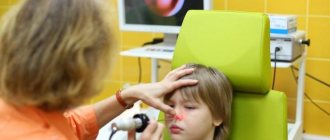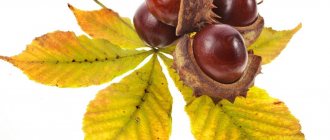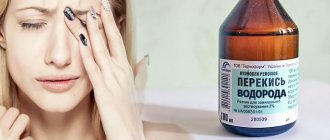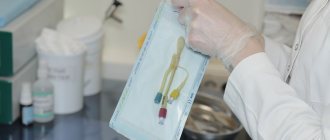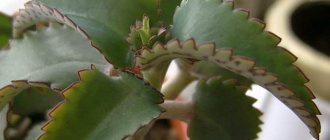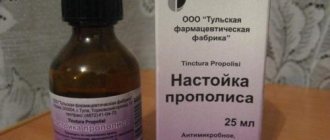Many ailments that affect the human nasopharynx are caused by the action of pathogenic staphylococcal bacteria. They also provoke the development of sinusitis. A feature of bacteria is an increased level of resistance relative to negative environmental parameters. Therefore, the treatment of sinusitis and other problems with the nasopharynx caused by a bacterial factor is very difficult.
Chlorophyllipt demonstrates certain effectiveness for sinusitis. The basis of its composition is formed by natural substances that effectively and delicately act on the sources of the disease. The drug is prescribed as an element of complex therapy. It complements the use of antibiotics and medications with an antiseptic effect, which is important for eliminating the manifestations of the disease, regardless of the nature of the course and severity of the symptoms.
Chlorophyllipt: general information
The drug contains a medicinal substance that is extracted from eucalyptus leaves using extraction technology.
The presence of a mixture of plant chlorophylls ensures high efficiency and diverse medicinal properties.
Chlorophyllipt is characterized by the following types of pharmacological effects:
- Pronounced antibacterial effect against types of staphylococcus, antibiotic-dependent and antibiotic-resistant groups.
- Providing an increase in oxygen concentration in the composition of tissues, which prevents the development of hypoxia in them.
- Detoxifying qualities.
- An action that increases the effectiveness of antibiotic-based therapy.
Thanks to the antiseptic and anti-inflammatory effect of the product, a positive effect is provided for sinusitis of a bacterial nature. Antimicrobial properties help cope with sore throat.
The drug can be purchased commercially in several forms. The patient is offered a choice:
- Chlorophyllipt in tablet form, intended for resorption in the oral cavity.
- An alcohol solution with a concentration of 1% or 0.25%, which is intended for external use and oral use if necessary.
- Oil solution 2% for local use.
- Sprays.
The release form determines the presence of auxiliary components that complement the thick extract of the main substance. If the alcohol composition contains 96% ethanol, then the tablets contain elements of ascorbic acid with sugar and calcium stearate.
Chlorophyllipt in tablet form
The choice of form is determined by the nature of the pathology, the age of the patient and the need to act directly on the area of infection development. The tablets are effective for diseases of the nasopharynx, and the alcohol composition is suitable for eliminating the manifestations of ulcers or sepsis.
What is chlorophyllipt?
The product has the appearance of a dark green liquid with a pronounced eucalyptus odor. The composition of chlorophyllipt in the nose includes chlorophylls A and B, which are specially isolated from the medicinal plant. The drug has a strong bactericidal effect, effective against multi-resistant strains of staphylococcus. It is used against staphylococcus in cases where it could not be destroyed by antibacterial drugs.
Chlorophyllipt is available for the common cold in the following pharmacological forms:
- solution - alcohol and oil;
- pills.
Medicine used in any pharmacological form accelerates the healing process and immediately alleviates the patient’s condition. After several doses, pus begins to be removed from the body, and if your throat hurts due to a runny nose, when mucus flows down its wall, dissolving the tablets will relieve inflammation and irritation of the mucous membrane.
In addition to a runny nose, chlorophyllipt is prescribed for diseases such as:
laryngitis;- pharyngitis;
- pleurisy;
- purulent lung diseases;
- burns;
- trophic ulcers.
It is strictly prohibited to prescribe chlorophyllipt yourself for sinusitis and other diseases, since it is a potent drug and can therefore cause side effects in the form of allergic reactions.
How to use chlorophyllipt for sinusitis?
The healing agent is used to eliminate the symptomatic manifestations of sinusitis and eliminate its causes. The appropriateness of use, the choice of form and dosage is determined by the doctor.
Turundas with chlorophyllipt in the nose
The use of turundas helps to activate the process of removing purulent formations from the nose. It thins mucus, facilitates nasal breathing with a simultaneous antimicrobial effect. The procedure is simple:
- prepare turundas by rolling sterile gauze into swabs or using cotton swabs;
- soak them in an oil-based solution and inject them alternately into both nostrils;
- The best penetration of the active component is ensured by being in a sitting position with your head tilted back.
The procedures are carried out three times daily with the duration of the turunda being in the nasal canals for 3-5 minutes. It is important to remember that this method is not suitable for children under 3 years of age.
To drip the product into the nose, you need to take an oil-based solution. It is drawn into a pipette, the head is thrown back and the medicine is injected into each cavity in turn. Usually 3-4 drops are instilled. up to 3 times daily. For children, the solution is diluted with vegetable oil in a 1:1 combination.
Chlorophyllipt oil solution
To ensure the greatest effectiveness when instilling, it is necessary to clean the nose with a solution of salt in advance. The oily composition is characterized by an irritating effect on the mucous membranes, and therefore can cause itching and burning, as well as the appearance of a taste in the oral cavity.
Inhalations with Chlorophyllipt
Treatment of sinusitis with Chlorophyllipt can also be carried out through inhalation. This approach helps to quickly relieve inflammation, cleanse and make breathing easier. Inhalation is used for children from 2 years of age.
When preparing the solution, it is necessary to use the alcohol composition of the drug. It is diluted in saline solution in a combination of 1:10. For a one-time manipulation, take 4 ml and use a nebulizer. The duration of inhalation is no more than 10 minutes. It is recommended to carry out treatment 2 times a day.
Nasal rinsing and oral administration
Rinsing with Chlorophyllipt will help get rid of pathogenic microorganisms that multiply on the inner surface of the nose. This method is suitable for adults. Alcohol-based solution in the amount of 1 tsp. diluted with 1 glass of saline solution. For the administration procedure, a syringe without a needle is used, into which 2 ml of the mixture is drawn.
Alcohol-based chlorophyllipt
Inject the medicine into one nostril so that the solution flows out of the second. Manipulations are carried out up to 3 times a day. In this case, you can use a regular syringe. Instead of saline solution, warm water in the amount of 1 glass after boiling is used for dilution.
Together with external use, oral use is possible. For this, an oil solution of 1 tsp. consume 2-3 times daily. Dissolving tablets or spraying a spray will help overcome the problem of respiratory ailments.
Inhalations for a runny nose
Chlorophyllipt is often used for inhalation, produced in a special solution for the treatment procedure. In otolaryngology, such procedures are the most important in the treatment of diseases of the upper respiratory tract. For inhalations with chlorophyllipt, you need to purchase a special solution, which is especially effective in penetrating the nasal cavity of staphylococcal infections. You can also use an alcohol solution, but dilute it with saline solution 1:10. To carry out one procedure, you will need 3 ml of this medicine.
Inhalations with chlorophyllipt for children must be carried out at least 3 times per day.
Correct use of chlorophyllipt will allow you to stop the development of the disease at the initial stage of its development, and thus avoid serious complications.
If you have questions for your doctor, please ask them on the consultation page. To do this, click on the button:
Ask a Question
Related Posts
- Painkillers for otitis media in children and adults
- The use of Lugol in the treatment of sore throat
- Sprays for the treatment of sore throat in children and adults
- "Sumamed" for sore throat in children and adults
How to take Chlorophyllipt for various forms of sinusitis
The remedy for sinusitis should be used after consultation with a doctor. A specialist will help you choose the best way to carry out the procedures and the desired dosage.
Use of the drug for the treatment of children
For children, it is advisable to take Chlorophyllipt by instilling a 2% oil-based composition into the nasal canals.
It should first be diluted with vegetable oil in a 1:1 combination.
The development of sinusitis in children often does not have obvious symptoms. The signs are more indicative of a respiratory illness, a common runny nose. Therefore, treatment should be carried out promptly, preventing the transition to the form of sinusitis.
Use during pregnancy
There has been no evidence of a negative effect of the drug on a pregnant woman and her unborn child. Given the increased vulnerability of such patients, it is advisable to be under the supervision of a physician.
Chlorophyllipt solution for runny nose and sinusitis
Oil and alcohol solution are used to treat acute diseases of the nasopharynx. They also produce an inhalation solution that is suitable for use in a nebulizer or steam inhaler.
The solution in the form of an oil can be used by children and adults as follows:
- rinse the nasal cavity with saline spray;
- take the Chlorophyllipt oil solution into a pipette;
- drop 2-3 drops into each nostril for an adult, 1 drop for a child;
- tilt your head back so that the solution gets completely deeper into the nasal passages.
This method is great for treating acute rhinitis, even if the child is sick. After introducing the oil, you may feel a slight burning sensation. This is evidence of the destruction of bacterial microflora.
A medicine with natural ingredients draws out all purulent and thick mucous secretions from the nasal passages, which is important in the treatment of acute or chronic sinusitis. Chlorophyllipt has the properties of thinning mucus, which in liquid form comes out faster.
To prevent the infection from spreading further after instillation, it is recommended to lubricate the back of the throat and tonsils with an oil solution every day. A simple bandage, well soaked in chlorophyllipt oil, is wrapped around the finger. The entire throat is thoroughly lubricated, after which it is not advisable to eat or drink water for several hours.
Contraindications and adverse reactions
There are no significant contraindications to taking the medicine. It should not be used only if there is an individual intolerance to the constituent elements, when the risk of allergies is high.
Taking Chlorophyllipt can cause side effects - skin rashes, swelling of the lips and mucous membranes in the nasopharynx. After resorption of the tablets, in some cases, irritation of the oral mucosa, headache, dizziness, and nausea may occur.
Application
In addition, you can instill chlorophyllipt into the nose; 3-4 drops several times a day will significantly improve the condition of the nasal passages, make breathing easier, and as a result, the main treatment will go faster and easier.
For children, it is recommended to dilute the chlorophyllipt solution with vegetable oil in the same proportion. Inhalation. Chlorophyllipt is excellent for use in the form of inhalations, as part of general treatment of the disease. To do this, you can add it to a container of hot water or use a special inhaler - a nebulizer.
Rinsing the nasal cavity. You can use a nasal rinse. To do this, you need to take a tablespoon of a 1% alcohol solution and dissolve it in a glass of water. Rinse your nose while leaning over the sink and carefully pour the solution into one of your nostrils so that it flows out of the other. Ingestion. In combination with topical use, the effectiveness of the drug can be enhanced if taken orally at the same time. For sinusitis, drink one teaspoon of the oil solution four times a day. The course of treatment is 10–14 days.
Diseases for which Chlorophyllipt is used
Judging by the main effect of the drug, conclusions can be drawn about the scope of its application. Chlorophyllipt is prescribed for the treatment of various diseases caused by staphylococci. It can be:
- sinusitis;
- angina;
- infected wounds;
- laryngitis;
- stomatitis;
- burn disease;
- staphylococcal septic conditions;
- cervical erosion;
- peritonitis;
- trophic ulcers;
- pneumonia;
- carriage of staphylococci.
Treatment of sinusitis with Chlorophyllipt
The drug Chlorophyllipt, widely known and used in medicine, has earned the trust of patients. It has antibacterial and antiviral effects.
Composition and indications for use
The drug was developed in Soviet times and is used today. This is a natural, potent antibiotic with an active sphere of action.
Thanks to natural components, pathogenic flora is not destroyed, and along with the destruction of viruses, the body’s condition does not deteriorate. The green liquid helps strengthen the defenses and is considered its main feature. The composition includes chlorophylls A and B, isolated from eucalyptus essential oil, which determined the effectiveness of the drug.
During infections of the ENT organs, doctors prescribe medicine more often than for other diseases. Chlorophyllipt treats pathologies of the nasopharynx: tonsillitis, sore throat, pharyngitis, sinusitis, rhinitis.
Provides recovery during acute respiratory infections (ARVI), sinusitis, otitis, laryngitis, runny nose and other diseases of the upper respiratory tract. It also improves the condition of a patient with staphylococcal sepsis, pneumonia, peritonitis, and erosive conditions of the female reproductive system.
Heals trophic ulcers and burns. In some situations, it kills microorganisms that the antibiotic could not cope with.
Properties of Chlorophyllipt
- Kills germs and bacteria (staphylococci, pneumococci).
- Relieves the inflammatory process.
- Reduces the amount of mucus and pus in the cavities.
- Eliminates pulmonary obstruction, thins mucus and removes it by coughing (during inhalation and internal use).
- Restores tissue integrity.
Due to its natural composition, Chlorophyllipt is prescribed for the common cold in children and pregnant women. This is done only by an experienced otolaryngologist. Allergy tests are done first.
There are a certain number of manufactured forms of the drug on the pharmacy market. For each patient individually, the doctor prescribes the appropriate medicine: oil and alcohol solution, capsules, aerosol and injections. The oily consistency is applied to the nose and the larynx is rinsed. The alcohol-based composition is intended for external use and throat irrigation.
Any type of medicine is prescribed for a specific area of use and has a different effect on the site of infection. Solutions are often prescribed to children and adults for instillation, rinsing the nasal passages and rinsing the mouth. After the first day of treatment, you feel better, pain decreases, pus begins to drain, irritation and inflammation of the nasopharynx mucosa goes away.
When small children live in a family, the issue of protecting the immune system and fighting viruses and infections is acute. To avoid infecting your baby, it is recommended to have this natural antibiotic in your medicine cabinet.
For instillation into the nose of children, Chlorophyllipt is available in the form of an oil solution. During nasal congestion and swelling with a runny nose, add medicine to the nasal passages using a syringe.
For pharyngitis and other inflammations of the throat, this solution is used to treat the internal mucous membranes (tonsils and palate).
An antiseptic, natural medicine will help every family member in case of illness. Before using the medicine for children and pregnant women, a doctor's prescription is required.
Directions for use and dosage
In accordance with the instructions, all conditions of therapeutic treatment are fulfilled under the supervision of a specialist. During the period of runny nose and throat diseases, the procedure of washing, cleansing, instillation and inhalation of medicinal vapors is used. Rhinitis with a runny nose in children is characterized only by the presence of snot, without discomfort and pain in the larynx. For this form of allergic rhinitis, this remedy is not used.
A runny nose infected with bacteria and viruses affects the nasopharynx, so the use of the product is mandatory. Treatment of a runny nose consists of complete cleansing of the nasopharyngeal cavity. The medicine is diluted independently.
Composition for washing:
- 1 cup Sodium chloride.
- 1 tsp alcohol composition of eucalyptus.
The medicine for clearing sinuses and gargling is prepared in the same way. Using a small syringe, 2 ml of the finished medicine is injected one by one into the nostrils, held in the sinuses and blown out.
This technique is carried out three times a day. In case of a complicated course of the disease, vasoconstrictor drops are injected into the nasal cavity. This method is not suitable for small children.
The indication for treatment will be a doctor's prescription for sinusitis, swelling and nasal congestion.
The next method of recovery will be drops. Without dilution, you can drip Chlorophyllipt oil solution into your nose, 2 drops three times a day. Before the procedure, it is advisable to rinse your nose with salt mixture and blow your nose. Sinusitis is an inflammation of the mucous membrane of the upper sinus.
The pathology occurs in a complicated and chronic stage due to the development of a large number of staphylococci. The main symptoms of sinusitis are accumulation and stagnation of snot with pus, increased temperature, migraine, pain in the temples and discomfort when touching the soft tissues of the face and forehead.
The doctor prescribes different methods of treatment with Chlorophyllipt, referring to the indicators of tests and examination.
The medicine cleanses the nose well, thins the pus and makes breathing easier. The effect occurs in a couple of days. This method is suitable for very young and older patients.
Parents take into account the fact that the medicine may pinch and burn the nasal mucosa. The child is given a separately diluted solution with sunflower oil in the same proportion.
Doctors recommend lying down for 5-10 minutes after instillation for a positive result.
Children's dosage is calculated only by a pediatrician. More often, doctors prescribe Chlorophyllipt for children under three years of age for a runny nose. Turundas and drops moistened with a solution perfectly kill bacteria. In this way, using a twisting motion, you can clean the passages with Chlorophyllipt when you have a runny nose. Inhalations with medicine help with complete illness.
Inhaling steam using a nebulizer is beneficial at any age. In the absence of a modern apparatus, you can add medicine in a similar proportion to a bowl of hot water. The oil solution for runny nose and sinusitis is mixed in a quantitative ratio of 1:10.
This procedure helps respiratory function and fights staph in the nose.
The treatment course lasts up to 10 days under the supervision of a doctor. The drug does not linger in organs and tissues and is therefore considered safe. Methods for treating sinusitis are not mentioned in the annotation for the drug. To prevent bacteria from spreading downward, you can lubricate your tonsils with chlorophyllipt oil using a bandage. They abstain from eating and drinking for some time.
It is important to eliminate all risks of complications from the drug before first use. To do this, you should contact an otolaryngologist. Chlorophyllipt for sinusitis and sinusitis is a very good drug in the initial stage of the disease. In extreme cases, antibiotics and serious therapy are prescribed.
Indications for treatment with Chlorophyllipt
The drug is sold in pharmacy chains in the form of solutions (oil or alcohol) or tablets. The doctor selects the best form of medication that will be most effective in eliminating infections of various locations. For example, liquid Chlorophyllipt for a runny nose is best used in the form of sprays or oil drops. Oil (2%) and alcohol (1%) solution is used for:
- douching in gynecology;
- skin infections;
- for nasal instillation if severe rhinitis occurs;
- when performing enemas;
- for gargling with pharyngitis, tonsillitis, adenoids;
- for intracavitary lavage of sinuses, especially with sinusitis;
- for the treatment of the gastrointestinal tract.
Read Can a spray cure a runny nose?
0.2% spray perfectly irrigates an inflamed throat, relieving pain and infection. The tablet form of the drug is also used to eliminate inflammation in the nasopharynx. For septic problems, the drug is used in the form of ampoules, through which it is introduced into the blood.
Chlorophyllipt for runny noses of various origins alleviates the condition and promotes rapid recovery. It removes purulent accumulations, which is important for the treatment of sinusitis and other types of sinusitis. For postnasal drip, the tablets relieve irritation and inflammation of the mucous membranes of the throat.
Inflammation of the sinuses with sinusitis
Also, a herbal-based drug is prescribed for:
- purulent pathologies of the lungs;
- pyelonephritis;
- pleurisy;
- phlegmon;
- sepsis from staphylococcus;
- burns;
- tracheitis;
- pharyngitis;
- stomatitis;
- bronchitis;
- trophic ulcers.
Chlorophyllipt solution helps with diseases of the nose and throat. It is used to lubricate the nasal canals, soak turundas that are inserted into the nose, irrigate a sore throat, and use it to eliminate otitis media. The dosage form and dosage are selected exclusively by the doctor, taking into account the location of inflammation, the age of the patient, and the possibility of side effects.
Variety of release forms
Chlorophyllipt is produced in several dosage forms. This:
- 2% oil solution for topical use;
- 1% and 0.25% alcohol solutions;
- spray;
- lozenges.
In all types of the drug, the active substance is a thick extract of chlorophyllipt. The composition of auxiliary components differs depending on the form of release. For example, in an alcohol solution, the additional component is 96% ethanol; in tablets, this role is played by ascorbic acid, sugar and calcium stearate.
This variety of forms allows you to choose the optimal type of remedy for treating patients of all age groups. In addition, it makes it possible to use the drug directly at the source of infection, regardless of its location.


